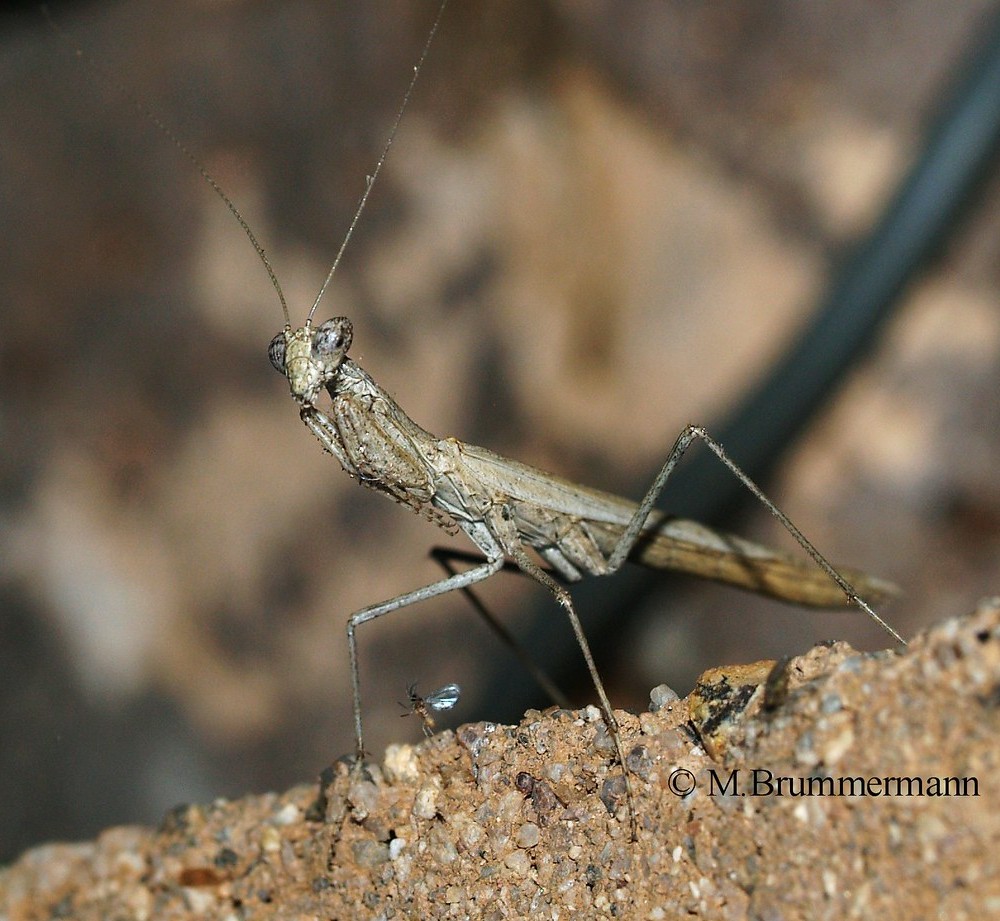Agile ground mantis
(Litaneutria minor)

Description
Litaneutria minor, or the agile ground mantis, is native to the drier regions of North America. L. minor is found in the United States in Colorado, Arizona to Mexico, and the eastern regions of Washington to California. They also can be found in Canada in the southern Okanagan Valley and are Canada's only native mantis. They are very active hunters and will be seen running across the ground from early spring to late summer. Males and females obtain a length of about 30 millimetres (1.2 in) in the wild. The adults are usually dark grey or dark tan in color. Outer ventral margin of fore femur has 4 spines, fore femur lacks groove typical to other mantids, long thin filamentous antennae. Males have 8 abdominal segments with a brown spot near the base of the forewings. Females have 6 abdominal segments with a rough pronotum and have no wings, usually showing wing pads however. Males appear to have much more developed wings than females, yet, do not fly. L. minor can be observed actively hunting on open ground during sunny days. Ground mantids have only been observed hunting either on the ground or on small shrubs a few centimeters above the ground surface. As with all mantids, the front legs of L. minor are highly developed to grab and hold prey. The four spines on the fore femur and the spines on the tibia are developed to rapidly close on prey, holding the prey in a tight grip, while the mandibles begin eating the prey. Nymphs can sometimes be cannibalistic as with most mantids, and begin hunting their first day. Young feed mainly on small flies, but as they grow, they will hunt down and attack anything that they can. Typical food sources include: moths, flies, grasshoppers, katydids and crickets. Ground mantids have been observed chasing down prey, rather than adopting the normal praying mantis "sit and wait" hunting behavior.
Taxonomic tree:







